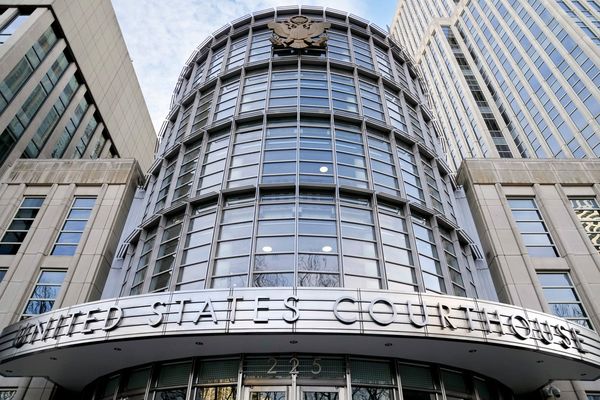/Elon%20Musk%2C%20founder%2C%20CEO%2C%20and%20chief%20engineer%20of%20SpaceX%2C%20CEO%20of%20Tesla%20by%20Frederic%20Legrand%20-%20COMEO%20via%20Shutterstock.jpg)
Global electric vehicle (EV) leader Tesla (TSLA) is one of those rare companies that evokes strong reactions from its backers and naysayers alike. While its cheerleaders hail the visionary leadership of CEO Elon Musk to steer one of the most consequential companies of this century, naysayers opine that the mercurial nature of Musk does not make it a favorable investment.
Well, if Tesla’s share price performance in 2025 is anything to go by, then the skeptics are winning for now. The stock is down 38% YTD.

However, in a recent interview, Musk revealed that he is planning to quit the Department of Government Efficiency (DOGE) soon, as he believes that his work there is coming to an end. This could alleviate the concern held by many investors who worry that Musk is too distracted between his role with DOGE, Tesla, and his other companies like SpaceX and xAI.
Ron Baron Supremely Bullish About Tesla
This should be music to the ears of Tesla investors, as many believed that Musk’s focus had shifted away from the company and that the bulk of his efforts were directed more toward his role in the government. One of those investors is Ron Baron, a billionaire investor and the founder of Baron Capital, a New York-based investment firm known for its long-term, growth-oriented investment strategy.
The seasoned investor, in a recent interview with CNBC, said that he sees Tesla’s valuation multiplying from its current level near $1 trillion to hit $5 trillion over the next decade. This would imply roughly 400% upside potential for TSLA stock.
What is the basis for such an optimistic assumption about the company? Let’s have a closer look.
Autonomous Driving
Baron cites autonomous driving or Full Self-Driving (FSD) as the key catalyst that will propel Tesla’s market cap in the coming decade. Baron stated, “If you do 50,000 miles a year for a car (Robotaxi) those cars generate ... $30, or $40 or $50,000 dollars in profits per year. Per car. So every time you have a million cars you adding $30, or $40 or $50 billion dollar to profits per year.”
Baron’s assertions were backed by the company’s vehicle sales in Q4 2024.
Tesla achieved a record-breaking quarter with vehicle deliveries reaching 495,570 units. Concurrently, the company saw a sharp increase in Full Self-Driving (FSD) miles, particularly following the introduction of Version 12. Prior to mid-2024, most accumulated FSD miles had been driven using Version 11 and earlier iterations, but from that point onward, Version 12 adoption surged significantly. It now constitutes the majority of total miles driven, reflecting growing user confidence in Tesla’s latest FSD architecture, which relies more extensively on end-to-end neural networks and real-world data for continuous learning and improvement.
At the same time, Tesla significantly enhanced its AI training capabilities, ramping up computing power by over 400% throughout 2024. This substantial increase reinforces its position at the cutting edge of autonomous vehicle technology, enabling greater efficiency in processing real-world driving data to refine FSD performance.
As part of its broader push toward autonomous mobility, Tesla is set to introduce its Cybercab and Robotaxi service in June. This marks a pivotal moment in the company’s strategy for self-driving ride-hailing, and the company has now surpassed 3 billion cumulative autonomous miles driven. With this competitive advantage, Tesla continues to strengthen its leadership in the development and commercialization of autonomous driving solutions.
Optimus
Baron’s vision of a $5 trillion market cap for Tesla may very well also hinge on Tesla’s humanoid robot, Optimus, for which Musk sees a revenue potential surpassing $10 trillion.
In my earlier analysis, I discussed Musk’s projection that once annual production of Optimus scales to 1 million units, the cost per unit is expected to fall below $20,000.
Furthermore, a new iteration of the Optimus bot is anticipated to be introduced before the year ends, with enhancements that remain undisclosed but are rumored to bring significant advancements to its capabilities.
Dojo Supercomputer
Tesla’s Dojo Supercomputer, first revealed at the company’s AI Day in 2021 after being in development since 2019, is a specialized AI training system built to handle vast quantities of video data crucial for autonomous driving. It plays an essential role in refining Tesla’s Full Self-Driving (FSD) technology by processing real-world driving scenarios to enhance decision-making and overall system performance.
As I previously discussed, analysts at Morgan Stanley have estimated that Dojo could contribute as much as $500 billion in additional enterprise value for Tesla, reflecting its long-term significance. Beyond its impact on autonomous vehicle technology, the extensive datasets processed by Dojo are also instrumental in advancing Tesla’s Optimus project, reinforcing the company’s broader ambitions in artificial intelligence and automation.
Energy Storage
During the fourth quarter of 2024, Tesla achieved a new milestone by deploying 11.0 GWh of energy storage products, marking a record high for the company. Ongoing investments in battery advancements and the expansion of charging infrastructure highlight its commitment to staying ahead in an industry where technological progress is accelerating at an unprecedented pace.
As I previously covered, Tesla has also completed the construction of its Shanghai Megafactory, a move aimed at scaling up energy storage production. With the continued expansion of its high-margin energy storage segment, including the growth of Megapack deployments and solar solutions on a global scale, this division is set to play an increasingly integral role in Tesla’s overall business strategy.
Analyst Opinions on TSLA Stock
Considering these factors, analysts have assigned Tesla stock a consensus rating of “Hold,” with an average target price of $337.42, suggesting potential upside of approximately 33% from its current valuation. Among the 41 analysts covering the stock, 16 have issued a “Strong Buy” recommendation, three rate it as a “Moderate Buy,” 12 maintain a “Hold” stance, while 10 have given it a “Strong Sell” rating.








